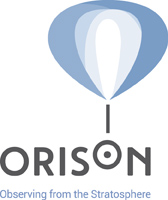Scientific Cases

_ Stellar occultation studies, where researchers are severely limited by the observations in daylight because they miss many important events that happen in daylight, and they are also severely limited by cloud cover (and by the existence or not of telescopes in the shadow path areas). These problems would be solved with stratospheric telescopes. In the future, the possibility of using medium-sized telescopes in stratospheric balloons would strengthen the competitiveness in this field. If a fleet of balloons can be launched for specific events, there is guarantee that several chords can be obtained and therefore size determination with superb kilometric accuracy can be made. Besides, if the objects have tenuous atmospheres, they can be studied in detail and a lot of information can be derived on the particular body. This field of stellar occultations, mainly by transneptunian objects has recently produced relevant science published in the most important scientific journals such as an in depth study of dwarf planet Eris[1], the characterization of the dwarf planet Makemake[2], and even the detection of a ring system around two Centaurs[3] [4].
_ Detection of rings around solar system bodies. Thanks to the very high photometric precision that the stratospheric flights provide, we would be able to detect very thin rings around solar system bodies, with unprecedented accuracy during specific occultations. Two ring systems have recently been detected in non-planetary sized bodies[5] [6], which have been a breakthrough in planetary science, and we suspect that other outer solar system bodies may possess rings (some centaurs and trans-neptunian objects). We need to find and study as many ring systems as possible. The extremely good Signal to noise ratio that stratospheric flight observations allow will enable the detection and study of rings systems to unprecedented detail.
_ Study of other time-critical astronomical events. For instance, the Shoemaker Levy 9 impact with Jupiter was predicted more than a year in advance to the actual collision, and preparations could be done to ensure detection. Recently a near miss of comet Siding Spring C/2013 A1 with Mars was predicted. If a collision of two bodies is predicted, balloon flights can be arranged so that clouds do not ruin the observations. Unique astronomical events should be observed with guarantees of success. Telescopes onboard balloons are a guarantee against clouds ruining observations.
_ Studies of lunar impact flashes on the night side of the moon would increase their sensitivity by being able to get rid of the high background caused by scattered light from the illuminated part of the Moon using stratospheric telescopes because most of the scattering comes from the atmospheric gases. Also the sensitivity would be improved because of the existence of basically no turbulence in the high stratosphere.
_ Studying exoplanets, particularly in M type stars. The analysis of candidate transiting Earth-like planets through the transit and eclipse photometry at different wavelengths or through low resolution spectrometry methods will allow their characterization. For transit and eclipse photometry, stratospheric balloons will allow performing the best observations possible. This would strengthen the output results from CARMENES[7]. But other research activities on other transiting exoplanets would be performed. The physical characterization of potentially habitable exoplanets is a very hot topic in current astrophysics.
_ Studies of serendipitous stellar occultations. The excellent photometry stability at the stratosphere also allows us to perform very fast photometry and very small transneptunian objects can be detected through dimming of stellar sources. This would allow us to explore solar system objects that reflect so little light that they are not detectable even with the largest future huge telescopes. This is not feasible from the ground.
_ High spatial resolution imaging and study of the planets at all epochs, even near Conjuction and at many wavelengths.
_ Detection and mainly characterization of NEOs that are angularly close to the Sun. This is an important topic and there are similarities of goals in this regard with the concept of the AsteroidFinder space mission.
_ Cometary science when the comets get angularly close to the Sun (which is very often).
_ Direct imaging of high contrast systems. Because of the atmosphere does not scatter light and the turbulence is severely reduced at stratospheric levels, telescopes onboard balloons can provide excellent observations for objects of high contrast, like faint nebulae around bright stars or light echoes around bright stars.
_ Study of disks around stars and exoplanet formation. Because of the atmosphere does not scatter light and the turbulence is severely reduced at stratospheric levels, telescopes onboard balloons can provide excellent observations for objects of high contrast.
_ Collecting Interstellar Dust Particles. This is usually done with stratospheric planes but the balloons can reach much higher elevations and have advantages. There have already been balloon flights such as DUSTER for this goal.
_ Complementing ALMA observations simultaneously or near simultaneously at different wavelengths not reachable from the ground so that the Spectral Energy Distribution can be determined without time variability concerns.
_ Complementing observations from large observatories in general. For instance, one can carry out observations with the 8m VLT telescope in Chile and simultaneously launch a balloon that can observe at complementary wavelengths not observable from the ground. This is important for objects with time variability.
_ Earth remote sensing at night. The high sensitivity of the astronomical instruments can be used to record data from Earth’s surface at night (using the stabilized platforms and the telescopes in nadir view). This can monitor bioluminescent areas, study light pollution and mitigation strategies, monitor energy waste and can have lots of other applications.
_ There are lots of applications for general-purpose stratospheric balloons. Balloons that could carry stabilized payloads of medium weight would have an immense range of applications also outside the scientific field. Their impact in surveillance and security at night conditions and even in telecommunications to provide WIFI at remote and broad areas (see for instance the Loon project by Google[8]) can be huge.
[1] Sicardy, Ortiz et al 2011 2011Natur.478..493S
[2] Ortiz et al. 2012 2012Natur.491..566O
[3] Braga-Ribas et al. 2014 2014Natur.508...72B
[4] Ortiz et al. 2015 2015A&A...576A..18O
[5] Braga-Ribas et al. 2014, 2014Natur.508...72B
[6] Ortiz et al. 2015, 2015A&A...576A..18O
[7] Calar Alto high-Resolution search for M dwarfs with Exoearths with Near-infrared and optical Échelle Spectrographs https://carmenes.caha.es/
[8] Google loon https://www.google.com/loon/


